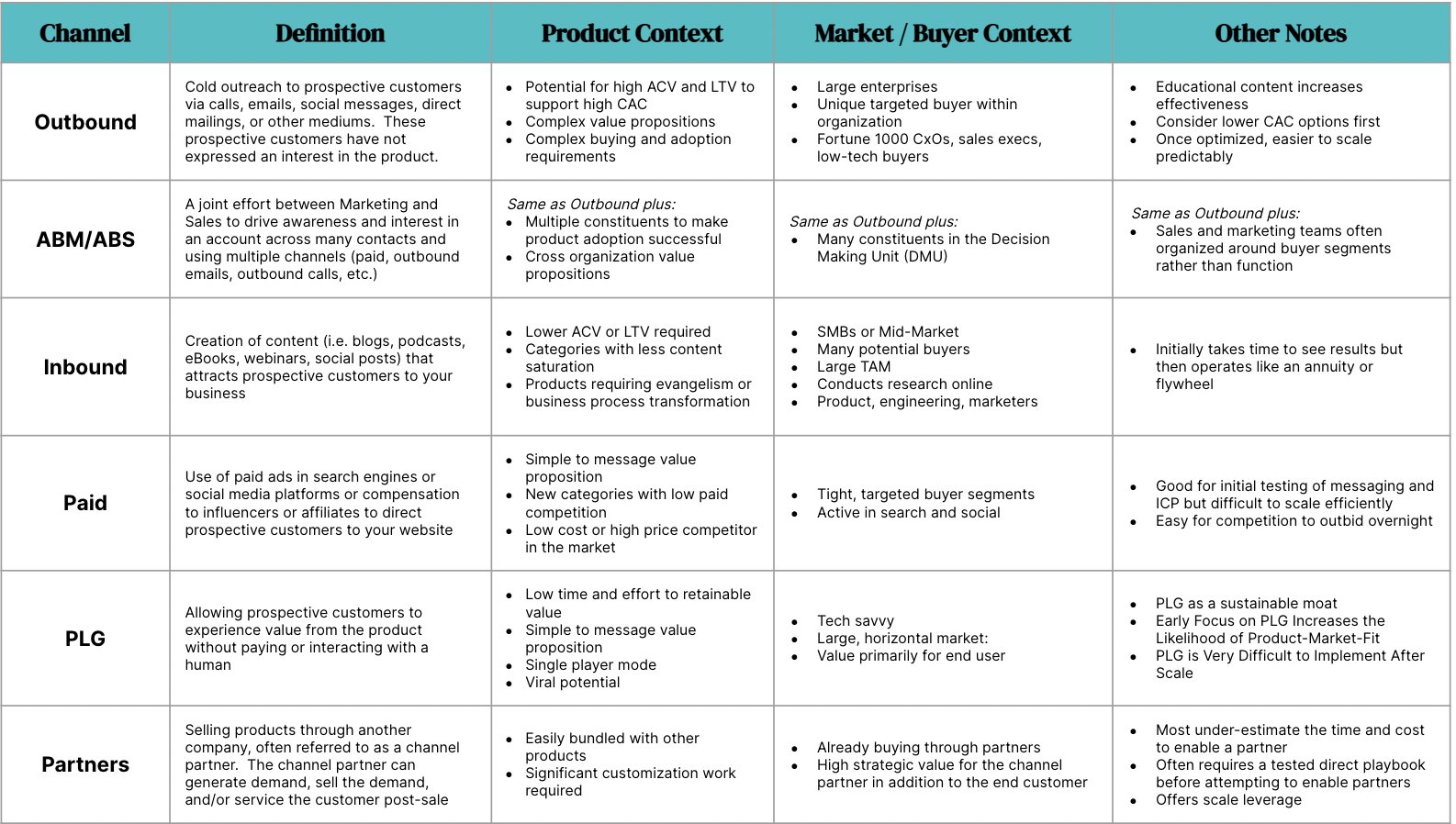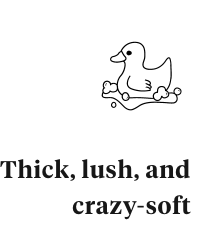Planning Digital Marketing Investments
During the calm of summer, we took the opportunity to discuss startups and digital marketing with a good friend (and expert in the field), Edouard Truong from Cardigan agency.
Digital marketing remains a constant source of fascination and queries for startups. It's common to encounter startups with an endless to-do list in digital marketing, yet making little to no progress on their actual marketing goals.
The strength of digital marketing is also its Achilles heel: it's readily available and the plethora of choices makes decision-making challenging.
We touch upon foundational concepts: mistakes, strategies, investments, channels, SEO, ad creation, social media, and performance metrics. Of course, as Edouard often says, "it depends."
Every business case is unique. Leave the recipes to food blogs.
Consider our insights as starting points to challenge your colleagues or providers. The following questions and answers are a compilation of thoughts from Edouard Truong (Cardigan) and François Royer Mireault (highlow).
What mistakes do startups make in digital marketing?
Overinvesting in a robust technological infrastructure without knowing how to use it is a major pitfall. Startups often engage with other startups or review tech case studies and decide that tools such as "Intercom, Hubspot, Google Ads, LinkedIn Ads" are appropriate for them. They dive into these platforms without examining the costs and without considering the operational side.
Failing to allocate a media or amplification budget is another common error. It's mathematically impossible to grow a brand if no effort is made to reach a significant portion of the target audience. We often see startups spending hundreds of dollars monthly on content creation (e.g., managing social media pages) with no goal of extending their reach to their target audience. They set it and forget it, not even checking to see if it's effective or well-executed. "The box is ticked; we're posting on social media."
Attempting to replicate the model of another startup in a different category can also be a misstep. In B2B, for example, the potential client base is smaller. One can't rely on the model of Casper (the mattress company) and heavily invest in media from day one if the market consists of 500 sophisticated buyers with purchase cycles of 18-24 months.
Believing that one digital marketing tactic will address all marketing needs is a fallacy. Your marketing strategy should encompass a range of tactics aligned with your market. Perhaps you'll need to complement your digital acquisition campaigns with direct sales outreach. Maybe your SEO and social media strategy will pair well with a physical presence at industry events.
Assuming that customer acquisition is a linear curve can lead to miscalculations. Many startups have adeptly utilized digital media. They mistakenly believe that if they acquire an initial customer for $30, the subsequent 100,000 customers will also cost $30 each.
With a limited digital marketing budget, how should one approach it?
Limited Budget - Focus on a specific segment of the sales funnel. For instance, beginning with retargeting to optimize this part of the funnel is a solid starting point. We capture existing demand that is very close to conversion or an initial call with our company. In other words, we aim to "win" a critical segment of the funnel before having the budget to address the rest.
Limited Resources - Avoid spreading oneself too thin. Recognize that we can't be the best at community engagement, managing a Twitter presence, participating in forums, producing continuous content, etc. Instead, concentrate resources on a few tactics that can be executed well. Double down on strengths. If the team excels at content writing, then focus on a strategy surrounding content creation: blog posts, SEO, social media, and so on. If the team shines in sales, leverage strategies that bring you in touch with customers: webinars, events, email outreach, etc.
Think of it as "product-market fit," but in this case, it's "founder-marketing fit."
Maximize the return on every investment. There's no harm in crafting a quality blog post, breaking it down into 3-5 segments, and repurposing it over several weeks across social media and in email outreach. Consider media and tactics that can largely operate on autopilot. It's perfectly fine to produce three compelling LinkedIn ads and use them in a campaign lasting 8 to 12 weeks. Yes, ideally, one iterates, refreshes, produces, and remains active. However, you might not be immediately positioned to operate like a 50-employee company boasting $5M in annual recurring revenue.
How to Approach Testing a New Digital Acquisition Channel (e.g., Google Ads)?
Don't focus solely on direct conversions. Identify soft conversions (like visitors to your Pricing page on the website) to capture more volume, which will enable a more comprehensive test. There's often a fine line between something working and not working. The bottleneck might be elsewhere, such as in product design, pricing, etc. Especially in B2B, you don't generate sales directly from an advertisement or content piece. One must find something less direct to ascertain if there's traction and if the efforts are paying off.
Test the entire customer journey from A to Z. If you delegate campaign creation, step into the shoes of a potential customer to assess the quality of your strategy. Read the advertisements or suggested content aloud. Check the links. Ask yourself if the offer (content, promotion) is compelling enough for you. Test links and redirection pages on your phone, tablet, and computer. Everything good so far? Is it easy to contact you from the website? If I wish to learn more about you, are there options? Even better: ask a friend or colleague to do it.
Benchmark against yourself. The goal is to have a meaningful test if comparing two marketing tactics. For example, if you invest $1,000 monthly with an outsourced prospecting service, you could test a digital channel with the same budget for three months and compare lead volume, quality, etc. But a word of caution: look at absolute numbers.
A channel converting at 10% VS. 5% but generating low volume (e.g., one additional conversion or sale per month) isn't necessarily superior.
Design, Copywriting: Is it Crucial for Performance?
Don't blindly copy the giants of your industry. Asana and Monday don't imitate what SAP or Microsoft are doing. They're the challengers. They can afford to be bolder, to adopt the stance of the new kid on the block. Their brands aren't yet widespread, so they need to introduce themselves and express their unique perspectives. When you reach the multinational corporation stage that everyone recognizes, you can afford airport ad placements with just your name. Simply reminding people that you're around works. The role of a startup is to shake up its industry and carve out a space in people's minds.
The message accounts for 50% of marketing effectiveness. You don't necessarily need to invest in video production or sophisticated ad creative. But for heaven's sake, budget for good copywriting and design. (Kantar, 2021)
Be clear, not clever. Ensure people understand who's speaking, what you're doing, or what you're showing them.
You don't need to be original or funny. You must be extremely clear. Name your target audience. Directly in your messages, remind people that they are the exact audience you're addressing by using their titles. In B2B, this is commonly seen in LinkedIn content and ads: Marketers; Head of Sales; CTOs.
Give me a glimpse of what we're talking about! Show the product (screenshot, action photo, video) or a preview of the content (cover, teaser). Especially in B2B SaaS, 35% of websites don't do this well (and it's costing them sales).
SEO: Is It Still Worth It?
(Interestingly enough, we both started in marketing through SEO. Shout out to the SEO veterans!)
Yes, because it's fundamentally focused on understanding your customers. All startups should be educated about SEO. The SEO culture is about bringing content and communications back to the root problems and questions of people (which they search for on Google). It's simply good for company culture, regardless of the industry. It's a mindset, a way of thinking that aligns with the very essence of marketing: knowing your customers better than your competitors do.
SEO is your presence on search engines. So, SEO content creation isn't just for those in marketing. People in product and sales roles can also participate. For instance, by producing support articles for the product. PR professionals can ensure that a press release about a funding round is well-indexed as public content that will be found on search engines.
Content creation remains the enduring competitive advantage in SEO. All the more technical tactics (like meta-data, etc.) can be optimized by experts, but quality content isn't something you can merely buy. It's easier to perform well if you have good content, even if your technical foundations (meta, website architecture, etc.) aren't perfectly optimized. The opposite is challenging.
The intersection between product development and marketing is becoming crucial. It's not just about blog posts, landing pages, product pages, visuals, and images. It's also about considering how our product can generate content for search engines. For instance: a calculator for performing a task, a mini-tool that solves a problem, a preview of a free tool, etc. Any content from your website or brand that can be referenced by others online boosts visibility and, therefore, SEO credibility.
P.S. Julien Brault from Hardbacon recently shared his insights on SEO. He highlighted the importance of investing early, even if the channel might take time to show results.
Data and Pixels: Which Ones to Integrate on a Website?
Especially in B2B, it's recommended to incorporate pixels from the main platforms. Google, Facebook, LinkedIn, Microsoft, Hubspot, or another CRM. Even if you're not advertising yet, because when activated, they will provide insights about our audiences. For instance, LinkedIn provides audience statistics (profile, job type, region) even if you're not investing in ads.
The problem with pixels is that they can slow down the website. The choice of server and CMS is more important than the pixel script. Moreover, with the introduction of new privacy regulations, there will undoubtedly be new ways to collect data, but it's best to take advantage of it now before it's no longer possible.
Retargeting: When is it Worth It?
You could start with a few dollars a day. It depends on the platform. From the outset, you should install the retargeting pixels; it will increase the size of your audience. Over 500 on Facebook is recommended. With this, you can launch campaigns on a minimum budget, and when you reach critical mass, you can spend the budget. This is something to start right away. Later, you work on acquisition campaigns that feed into retargeting campaigns. Even without a paid strategy, there should be a retargeting strategy.
Is Google Analytics Enough for a Tech Startup?
Yes, Google Analytics is sufficient. It doesn't manage lifetime value; it's not a CRM or a service to manage customer experience either. You have to bridge it with other software. The new GA4 version, which will be mandatory in 2023, will certainly help delve deeper.
Regarding KPIs, start with visits and conversions. Fundamentally, it's monthly visits and conversions or soft conversions, as mentioned earlier. Then, track it smartly: if the conversion rate drops, did traffic increase?
Don't jump to conclusions too quickly, especially with small data sets. "If it's red, we panic; if it's green, we cheer!" Leave that mindset for big corporations.
Next, you can break it down by channel. Look at the variations. Which channel accounts for the most conversions per month? Does a channel have a good conversion rate but low visit volume? Can we boost it further? Be careful not to jump to conclusions too quickly! If we can't explain the why, it might just be normal variance.
Final words
Edouard
Even on a digital channel, attention to detail is felt. Execution is key. It's not always just about budget. There's a quality aspect. Delivering on promises is crucial. You need to convey that you genuinely have something to say and offer, and that the team is there (behind the screen) and motivated. All digital tactics can work or fail. It depends on the offering. If it's not thoughtfully crafted or doesn't seem passionate, it's even easier to ignore than in the physical world.
François
A good rule of thumb is to think in terms of opportunity cost. I grew up in a digital world, and it's been my career for over 10 years. But it's not always my first recommendation. One should remain objective in startup marketing and compare options. If you invest $5,000 in creating a video (that you don't pay to promote) and you reach 500 people with it, with 50 qualified prospects, that's $100 per sales pitch. Perhaps it would be better to attend an event and speak directly to 50 people!















